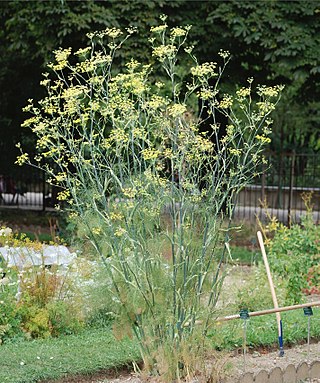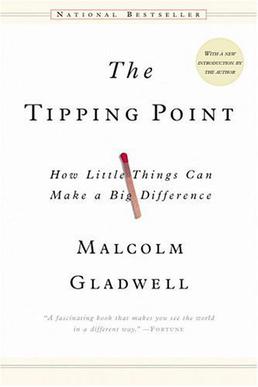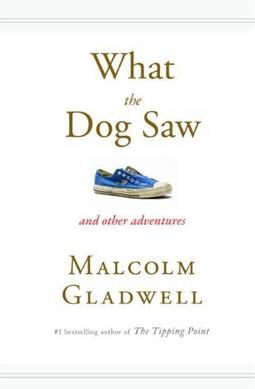
Phoenix dactylifera, commonly known as the date palm, is a flowering-plant species in the palm family, Arecaceae, cultivated for its edible sweet fruit called dates. The species is widely cultivated across northern Africa, the Middle East, Horn of Africa, Australia, South Asia, and California. It is naturalized in many tropical and subtropical regions worldwide. P. dactylifera is the type species of genus Phoenix, which contains 12–19 species of wild date palms.

Fennel is a flowering plant species in the carrot family. It is a hardy, perennial herb with yellow flowers and feathery leaves. It is indigenous to the shores of the Mediterranean but has become widely naturalized in many parts of the world, especially on dry soils near the sea coast and on riverbanks.

The jackfruit is the fruit of jack treeArtocarpus heterophyllus, a species of tree in the fig, mulberry, and breadfruit family (Moraceae). The jackfruit is the largest tree fruit, reaching as much as 55 kg in weight, 90 cm in length, and 50 cm in diameter. A mature jackfruit tree produces some 200 fruits per year, with older trees bearing up to 500 fruits in a year. The jackfruit is a multiple fruit composed of hundreds to thousands of individual flowers, and the fleshy petals of the unripe fruit are eaten.

New Coke was the unofficial name of a reformulation of the soft drink Coca-Cola, introduced by The Coca-Cola Company in April, 1985. It was renamed Coke II in 1990, and discontinued in July 2002.

Malcolm Timothy Gladwell is a Canadian journalist, author, and public speaker. He has been a staff writer for The New Yorker since 1996. He has published seven books. He is also the host of the podcast Revisionist History and co-founder of the podcast company Pushkin Industries.

Charoset, haroset, or charoises is a sweet, dark-colored mixture of finely chopped fruits and nuts eaten at the Passover Seder. According to the Talmud, its color and texture are meant to recall mortar, which the Israelites used when they were enslaved in Ancient Egypt, as mentioned in Tractate Pesahim 116a of the Talmud. The word comes from the Hebrew word for clay.

Christopher Michael Langan is an American horse rancher and autodidact who has been reported to score very highly on IQ tests. Langan's IQ was estimated on ABC's 20/20 to be between 195 and 210, and in 1999 he was described by some journalists as "the smartest man in America" or "in the world".

Summer savory is among the best known of the savory genus. It is an annual, but otherwise is similar in use and flavor to the perennial winter savory. It is used more often than winter savory, which has a slightly more bitter flavor.

Synsepalum dulcificum is a plant in the Sapotaceae family, native to tropical Africa. It is known for its berry that, when eaten, causes sour foods subsequently consumed to taste sweet. This effect is due to miraculin. Common names for this species and its berry include miracle fruit, miracle berry, miraculous berry, sweet berry, and in West Africa, where the species originates, agbayun, taami, asaa, and ledidi.

In many European countries, particularly in Central and Eastern Europe, there are various traditions surrounding the use of bread during the Easter holidays. Traditionally the practice of eating Easter bread or sweetened "communion" bread traces its origin back to Byzantium, Eastern Catholicism and the Orthodox Christian church. The recipe for sweetened or "honey-leavened" bread may date back as far as the Homeric Greek period based on anecdotal evidence from classical texts.

Pandanus conoideus is a plant in the Pandanus family from New Guinea. Its fruit is eaten in Papua New Guinea and Papua, Indonesia. The fruit has several names: marata, marita and kuansu, or buah merah. The fruit is typically prepared by splitting it, wrapping it in leaves, and cooking it in an earth oven, making it a traditional delicacy.
Practice is the act of rehearsing a behavior repeatedly, to help learn and eventually master a skill. The word derives from the Greek "πρακτική" (praktike), feminine of "πρακτικός" (praktikos), "fit for or concerned with action, practical", and that from the verb "πράσσω" (prasso), "to achieve, bring about, effect, accomplish".

The Tipping Point: How Little Things Can Make a Big Difference is the debut book by Malcolm Gladwell, first published by Little, Brown in 2000. Gladwell defines a tipping point as "the moment of critical mass, the threshold, the boiling point." The book seeks to explain and describe the "mysterious" sociological changes that mark everyday life. As Gladwell states: "Ideas and products and messages and behaviors spread like viruses do." The examples of such changes in his book include the rise in popularity and sales of Hush Puppies shoes in the mid-1990s and the steep drop in New York City's crime rate after 1990.

Outliers: The Story of Success is a non-fiction book written by Malcolm Gladwell and published by Little, Brown and Company on November 18, 2008. In Outliers, Gladwell examines the factors that contribute to high levels of success. To support his thesis, he examines why the majority of Canadian ice hockey players are born in the first few months of the calendar year, how Microsoft co-founder Bill Gates achieved his extreme wealth, how the Beatles became one of the most successful musical acts in human history, how two people with exceptional intelligence—Christopher Langan and J. Robert Oppenheimer—end up with such vastly different fortunes, how Joseph Flom built Skadden, Arps, Slate, Meagher & Flom into one of the most successful law firms in the world, and how cultural differences play a large part in perceived intelligence and rational decision making. Throughout the publication, Gladwell repeatedly mentions the "10,000-Hour Rule", claiming that the key to achieving world-class expertise in any skill, is, to a large extent, a matter of practicing the correct way, for a total of around 10,000 hours, though the authors of the original study have disputed Gladwell's usage.
Derby's dose was cruel and unusual punishment and torture used in Jamaica to punish slaves who attempted to escape or committed other offenses like stealing food on plantations that were owned or run by Thomas Thistlewood. According to Malcolm Gladwell in his 2008 book Outliers, "The runaway would be beaten, and salt pickle, lime juice, and bird pepper would be rubbed into his or her open wounds. Another slave would defecate into the mouth of the miscreant [sic], who would then be gagged, with their mouth full, for four to five hours." The punishment was invented by Thomas Thistlewood, a slave overseer, and named after the slave, Derby, who was made to undergo this punishment when he was caught eating young sugar cane stalks in the field on 25 May 1756. However, historian Douglas Hall points out that "Derby's dose" was so-called because it was often administered by one of his slaves called Derby.

What the Dog Saw: And Other Adventures is the fourth book released by author Malcolm Gladwell, on October 20, 2009. The book is a compilation of the journalist's articles published in The New Yorker.

Revisionist History is a podcast by Malcolm Gladwell produced by Gladwell's company Pushkin Industries. It began in 2016 and has aired six 10-episode seasons.

The Bomber Mafia: A Dream, a Temptation, and the Longest Night of the Second World War is a 2021 book by Malcolm Gladwell that examines the US Bomber Mafia of World War II, which advocated precision aerial bombing as a means to win a war. Gladwell stated the audiobook for The Bomber Mafia came about as an expansion of material from his podcast Revisionist History, and that the print book originated from the audiobook. The book follows the Bomber Mafia, especially Major General Haywood S. Hansell, and the development of a high-altitude precision aerial bombardment strategy in World War II as a means to limit casualties. After difficulties in applying the Bomber Mafia's theoretical strategy, Major General Hansell was replaced by Major General Curtis LeMay, who utilized tactical changes such as attacking Japanese population centers with napalm to ensure a Japanese surrender. Upon release, The Bomber Mafia was met with mixed reviews, with reviewers praising its audiobook version but criticizing the book for a lack of detail and factual accuracy.


















